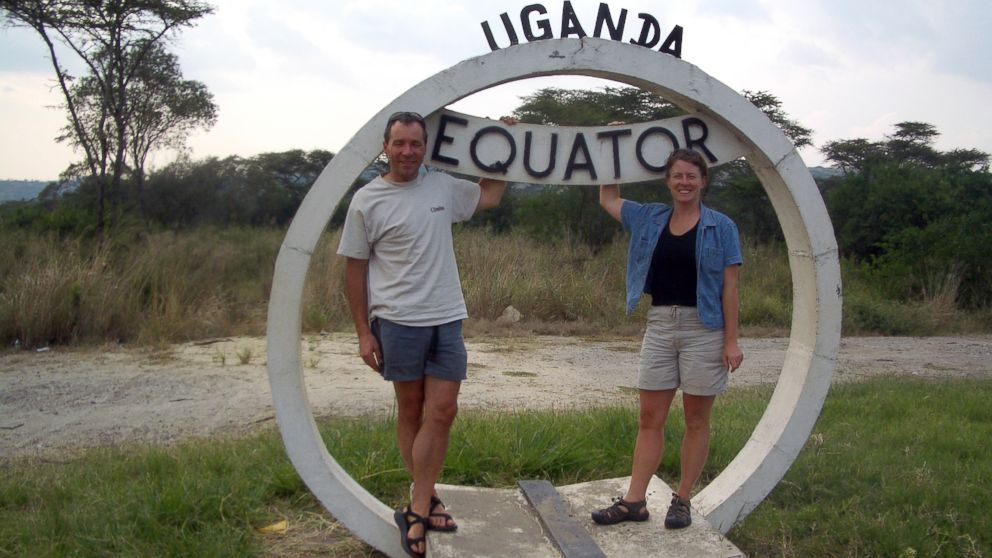4 Lessons From American Who Survived Ebola-Like Virus

— -- intro: Michelle Barnes didn’t have any symptoms of the Ebola-like virus that nearly killed her until she was in the air on a flight home to the United States from her Uganda vacation.
She had contracted Marburg virus, a "cousin" of the Ebola virus, but the diagnosis wouldn’t come until about a year after her nightmare plane ride, three trips to the doctor upon returning to the U.S. and 12-day stay in the hospital as her organs shut down.
That was 2008. Today, she watches the coverage of the worst Ebola outbreak in history unfold through different eyes than the rest of us.
Here are four things Barnes learned from her own brush with a deadly hemorrhagic fever and unknowingly importing it to the United States.
quicklist:1category: title: It’s Not the Patient’s Faulturl:text:Barnes was on vacation, hiking in Uganda on Christmas Day 2007, when her tour guide led her to a cave. She only looked in for a few minutes, observing the fruit bats hanging from the ceiling and pythons on the cave floor.
“I was told thousands of people per year peer into this cave,” she said. “I later discovered that the cave was reservoir for Marburg.”
She doesn’t know how exactly, but she got it from an interaction with an infected bat, she said.
“I had no idea I had caught a hemorrhagic fever,” she said. “I didn’t show symptoms until I was on my way back to the U.S.”
She was on a plane home on New Year’s Eve 2007 when she began to feel lightheaded and had a splitting headache. Over the next few days, she became nauseous and developed a fever and a rash.
“It was really, truly horrible,” she said, adding that no one deserves the deadly disease.
quicklist:2category: title:The Patient Can’t Think Clearly -- and Needs Your Helpurl:text:As soon as Barnes’s symptoms set in, she said her thoughts became jumbled.
“The one symptom that really stood out is I couldn’t think clearly,” she said. “I couldn’t make rational thoughts.”
Even worse, her husband went on a business trip as soon as they returned home to Colorado, and she began a new job. There was no one around to notice that she wasn’t acting like herself. There was no one to tell her that her symptoms were life-threatening and she should go to the emergency room.
For five days, she went to work, visited her parents, went to meetings at restaurants, went grocery shopping and did other normal things, knowing she was becoming sicker and sicker but not knowing she was walking around with a deadly, contagious virus. During that time, she said, she went to an urgent care clinic and her doctor a few times, but Marburg wasn’t on their radar and they sent her home with antibiotics.
As a result, she said, it's important that the people around potential Ebola patients -- loved ones, coworkers, classmates -- to make sure they get medical attention.
“That’s something every single person can do,” she said. “People need to be advocates for other people who are showing early signs of Ebola. Getting them to the hospital so they can be put in isolation is critical.”
quicklist:3category: title:US Hospital Procedures Are Safer Than You Thinkurl:text:Barnes was rushed to the hospital when she collapsed on her third visit to the doctor’s office. She stayed for 12 days, receiving supportive care, such as an IV and help breathing. When her gallbladder failed, doctors gave her surgery to remove it.
The entire time, no one knew she had Marburg.
“Nobody was infected,” she said, adding that doctors wore gloves and masks but nowhere near the protective gear mandated to treat a contagious hemorrhagic fever patient. More than 220 health care workers treated her during her hospital stay, but the Centers for Disease Control and Prevention conducted an investigation into her case and concluded that the virus was not passed to any other person during her period of contagiousness.
About six months later, Barnes read that a Dutch woman died of Marburg after visiting a cave in Uganda. She researched it and realized she had gone to the same cave.
She asked to be re-tested for Marburg, and the results were positive.



